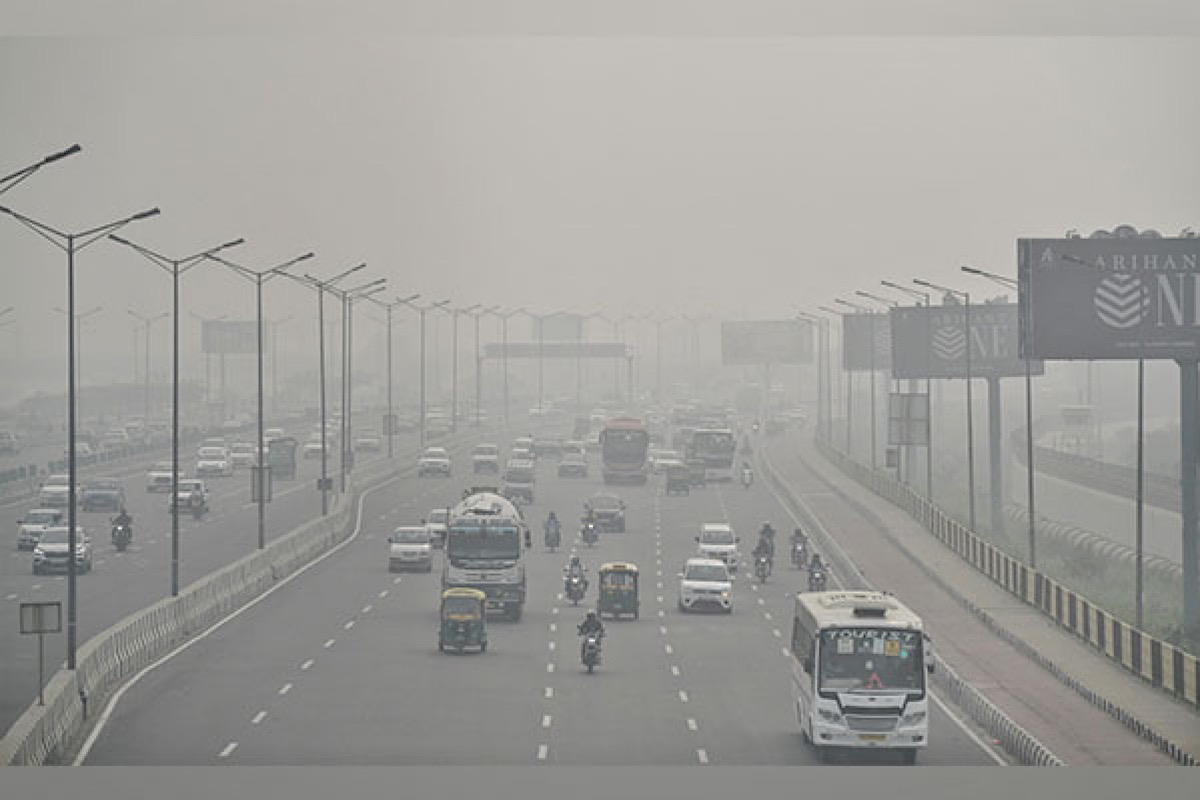200 mobile anti-smog guns deployed to fight pollution: Gopal Rai
In a decisive move to tackle air pollution in the national capital, the Delhi government has launched a large-scale water-sprinkling campaign across the city.
The city’s Air Quality Index (AQI) stood at 339, classified as ‘very poor,’ with 33 out of 40 monitoring stations recording AQI levels above 300 as of 4 p.m., according to data released by the Central Pollution Control Board (CPCB).

Air pollution (Photo:ANI)
The residents of the national capital woke up to a thin layer of smog on Thursday morning following Diwali celebrations.
The city’s Air Quality Index (AQI) stood at 339, classified as ‘very poor,’ with 33 out of 40 monitoring stations recording AQI levels above 300 as of 4 p.m., according to data released by the Central Pollution Control Board (CPCB).
Delhi recorded an AQI of 218 on Diwali in 2023, 312 in 2022, 382 in 2021, 414 in 2020, 337 in 2019, 281 in 2018, 319 in 2017, and 431 in 2016, as per CPCB data.
Advertisement
AQI categories are defined as follows: 0-50 (good), 51-100 (satisfactory), 101-200 (moderate), 201-300 (poor), 301-400 (very poor), 401-450 (severe), and above 450 (severe-plus).
In most areas of Delhi, the AQI remained above 300, with specific locations such as Anand Vihar at 389, RK Puram at 381, Wazirpur at 373, Bawana at 355, Jahangirpuri at 369, and Dwarka at 341, all falling into the ‘very poor’ category and posing serious health risks.
Due to the spike in pollution, many residents experienced respiratory issues, including coughing, sneezing, and shortness of breath. Additionally, symptoms like eye irritation, redness, and headaches were reported, especially among the elderly and teenagers.
Despite the Delhi government’s ban on the manufacture, storage, sale, and bursting of firecrackers, several areas in the capital disregarded the restrictions, with fireworks continuing through the night and contributing to the AQI increase.
Apart from air pollution, Delhi also faces water pollution as toxic foam was observed floating on the Yamuna River near Kalindi Kunj on Friday morning.
Ahead of the Chhath Puja, opposition parties have highlighted this issue, pointing to the AAP government’s failure to clean the river.
BJP leader Shehzad Poonawalla visited the Kalindi Kunj area, stating, “Today, after Diwali, we are here at a Chhath ghat and can see the foam floating in the river, a result of corruption by the Kejriwal government.”
Poonawalla further alleged that the Delhi Jal Board is spraying defoaming chemicals to control the toxic froth.
Earlier, the Commission for Air Quality Management (CAQM) mandated the implementation of Stage 2 emergency measures under the Graded Response Action Plan (GRAP) to curb the city’s air pollution.
In this phase of GRAP, efforts focus on controlling dust pollution and limiting emissions from diesel generators.
Measures include deploying mechanical and vacuum road sweepers, conducting water-sprinkling operations on main roads, and intensifying inspections at construction sites to enforce dust control protocols.
Advertisement